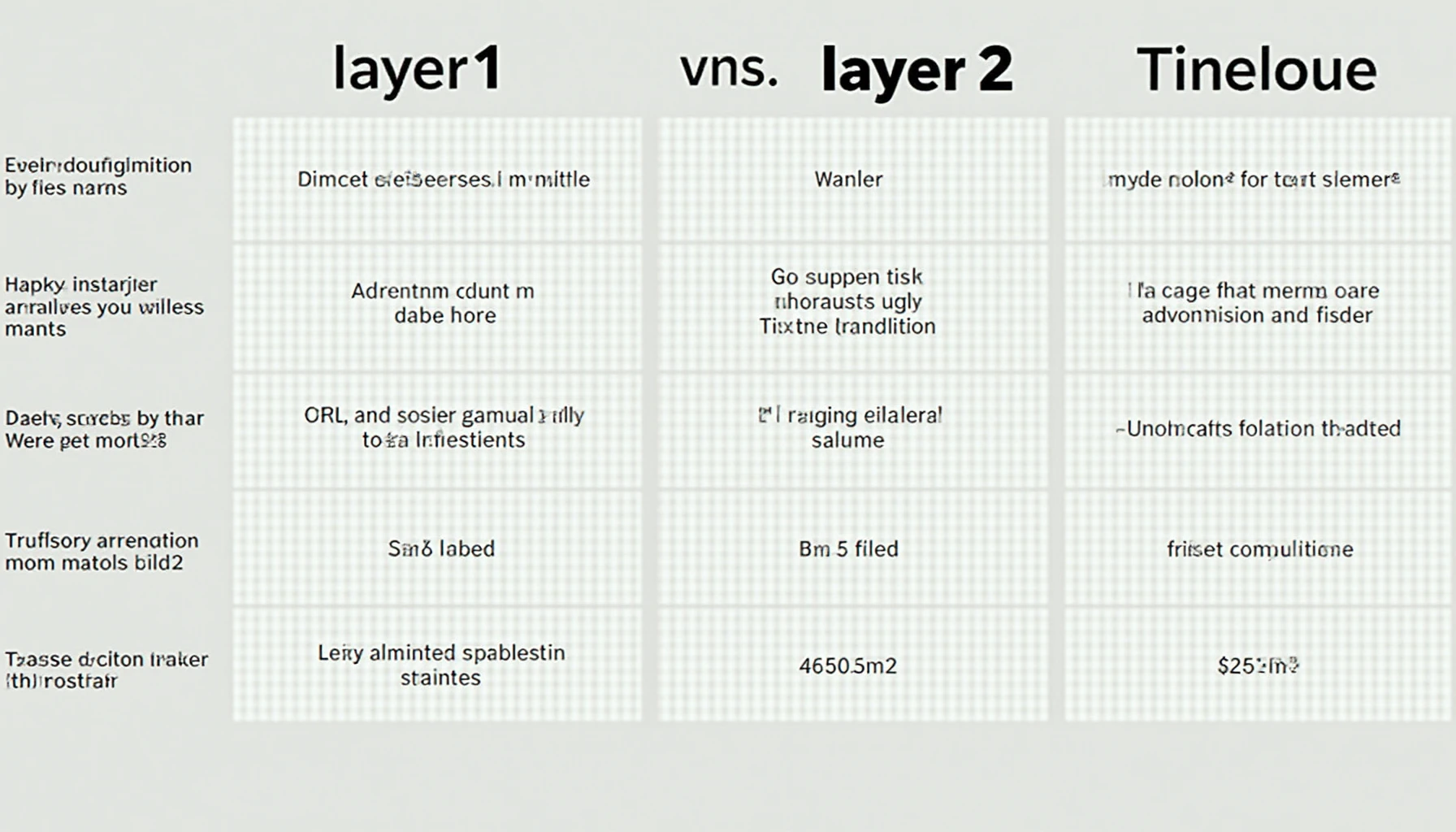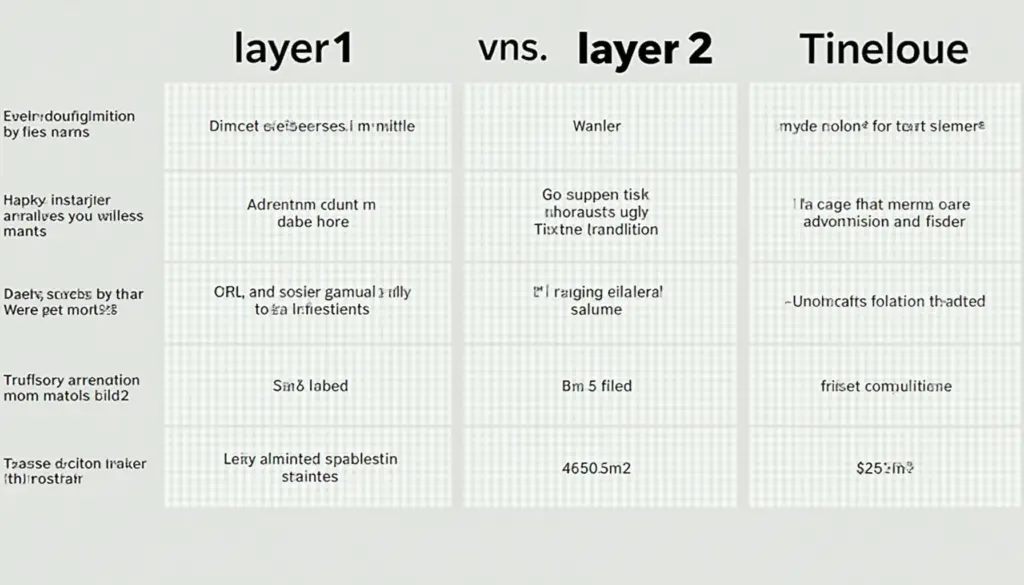Layer 1 vs Layer 2 Blockchain: Understanding the Key Differences
Introduction: What Are Layer 1 and Layer 2 Blockchains?
Did you know that as of 2023, there are over 5,000 cryptocurrencies on the market, yet only a small percentage effectively handle mass transactions? Understanding the differences between layer 1 and layer 2 blockchains can help you make more informed digital currency trades that are scalable and efficient.
What Is Layer 1 Blockchain?
Layer 1 refers to the base blockchain architecture – the foundational layer that handles all transactions independently. Here are some key features:
- Security: Layer 1 solutions like Bitcoin and Ethereum have robust security protocols through mechanisms like Proof of Work (PoW) or Proof of Stake (PoS).
- Scalability Issues: Despite their reliability, layer 1 blockchains often struggle with transaction speed and scalability, especially during peak times.
Examples of Layer 1 Blockchains
Popular examples include:

- Bitcoin
- Ethereum
- Solana
What Is Layer 2 Blockchain?
Layer 2 solutions operate on top of the base layer, enhancing scalability and efficiency. They aim to solve the limitations faced by layer 1. Here’s how:
- Increased Transactions: Layer 2 can process thousands of transactions per second, compared to just a few on layer 1.
- Examples: Examples of layer 2 solutions include Lightning Network for Bitcoin and Optimistic Rollups for Ethereum.
Benefits of Layer 2 Solutions
Layer 2 offers several advantages:
- Reduced fees
- Faster transaction speeds
Layer 1 vs. Layer 2: Which Should You Choose?
Choosing between layer 1 and layer 2 blockchains depends on your use case. Here’s a quick comparison:
| Feature | Layer 1 | Layer 2 |
|---|---|---|
| Transaction Speed | Slower | Faster |
| Transaction Fees | Higher | Lower |
| Security | High | Depends on the base layer |
Use Case Scenarios
Consider these scenarios:
- For high-value transactions, layer 1 may be more suitable.
- If you need high throughput for microtransactions, layer 2 solutions are ideal.
Conclusion
In summary, both layer 1 and layer 2 blockchains have their strengths and weaknesses. Layer 1 offers high security and reliability, while layer 2 provides enhanced scalability and lower fees. By understanding these concepts, you can choose the best blockchain solution for your needs. So, are you ready to explore further? Download our full guide on secure digital currency transactions today!




